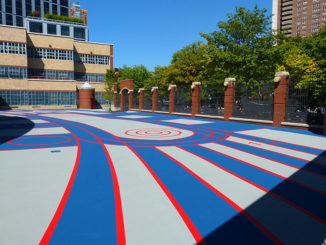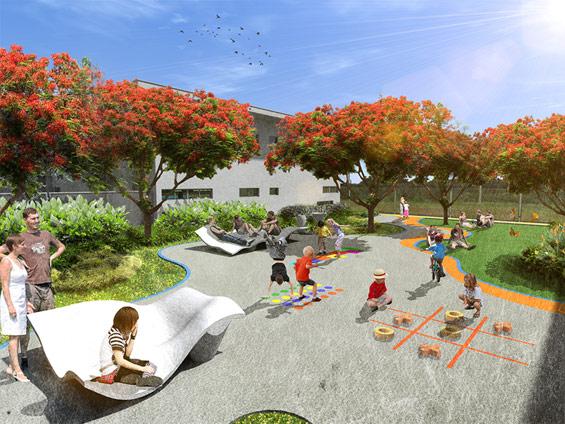
The proposed landscape design is translated into a symbolic representation of meanders in wetlands. The inspiration for the concept stems from the natural characteristics of place and respect for it.
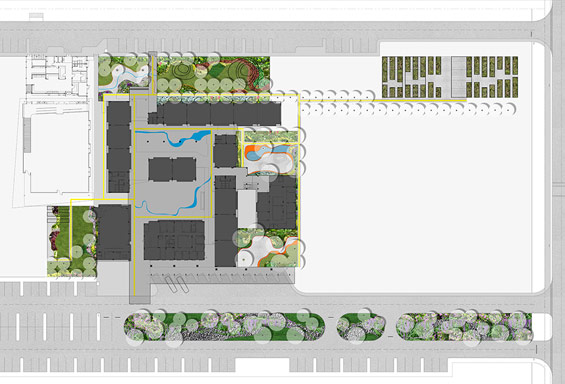
The school garden is composed of different areas with different functions, with an approximate total area of 5,000 sqm, all (areas) with the same goal : to provide didáctic and cheerful spaces. The winding pattern represents the flow of the meandering river that goes through the corridors connected together conceptually but in turn are interrupted by architectural elements. These organic lines are converted into carpet floors or plants contrasting with textures, shapes or colors.
An important contrast between the rigidity of the architecture and the contour of the outer space is created, but both are connected by a yellow line running along the corridors and invites you to enter each space, different in function but similar in their perception. The colors are actors and visual stimuli that can generate different reactions in our mood. The color psychology and color therapy experts recommend the pastel yellow and other colors alternating to promote concentration and intellectual development. The proposal is based on these theories of how to provide the best environment for children.
The land rises and becomes like little volcanoes breaking the horizontal space. These elevations convey dynamism to the scene allowing children to improvise and to make way for creativity where they can find a different way to play or just relax . All spaces provide a place to intellectual development and fun, as well as learning from nature through the garden where they can follow the development of vegetation and production.The grounds are transformed into places of fellowship and joy, in didactic and intellectual development spaces for children to grow surrounded by the best means to achieve happiness and learning at the same time .
The spaces acquire their identity through naming: The Theatrum (place to see), The Iocari (do something with joy), The Hortus (garden), The Liber (free) and The Vivarium (nursery).
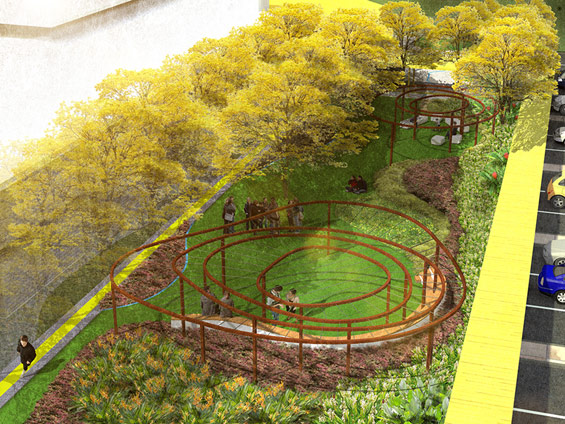
EL Theatrum, is divided by a corridor that connects the exterior with the interior space . To this place are intercepted the organic lines which join both areas through the vegetation and pavement. In this space the goal is to create an outdoor classroom, a kind of open-air amphitheater where they can enjoy a different experience surrounded by greenery and trees.
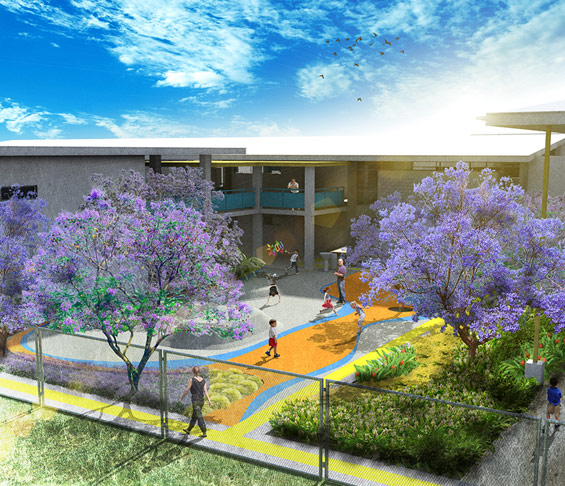
The Iocari aims to create joy and creativity , a space free game , a sort of blank slate that deforms creating elevations, changing the perspective, inviting you to sit and enjoy the journey which takes you to imagination.
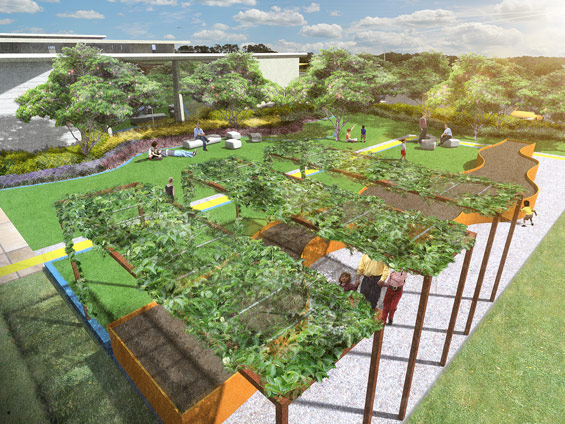
The Hortus is proposed as part of the garden, turn contemplative appreciated from the library under a watchful eye carpets plants in the foreground leaving visible that big planter, proposed that children learn in a didáctic and direct way how plants germinate, how develope and harvest, quite an interesting process cute and enriching learning.

The Liber outside the enclosure where children wait for their parents or public transport.
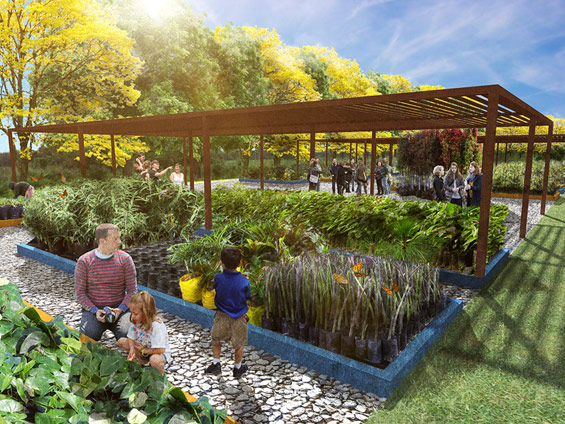
The Vivarium outside the premises where it is intended to grow and store a number of different plants for future planting or Didactic goal.
Colegio Panama | Juan Diaz Panamá | BeOnLand Landscape Architecture with JBJC
LANDSCAPE Architect: BeOnLand Landscape Architecture
Location: Juan Diaz, Panamá
Co-Author: JBJC – Arquitectura Paisagista
Design Team: João Bicho & Joana Carneiro, Nelson Soares
Status: Avantproject
Area: 5.000 sqm
Year: 2013


